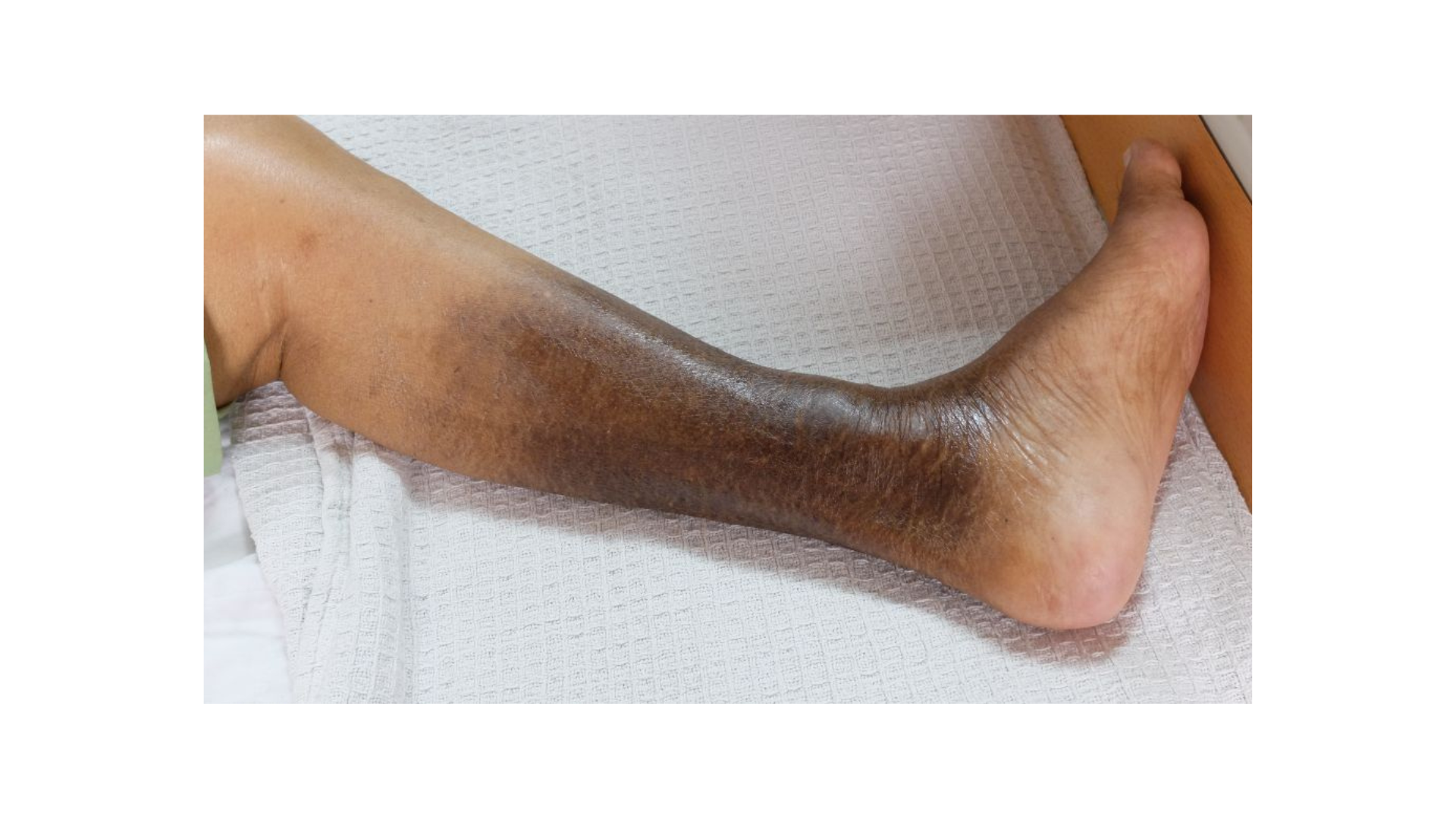Surgical Wounds: Understanding Complications
September 26, 2023
Introduction
The most common and costly surgical wound complication is surgical site infection (SSI), which has been reported to increase hospital length of stay by approximately 9 days and raise the cost of hospital admissions by more than $20,000.1 Wound dehiscence, seromas, and hematomas,2 as well as cellulitis,3,4 can also complicate surgical wounds. Beyond these wounds, complications include non-SSI hospital-acquired infections,5 deep veinthrombosis,5 shock or hemorrhage,5 and postoperative edema.6
Risk Factors
Proper wound healing requires adequate oxygen delivery to the wound, freedom from bacterial and necrotic contamination, and sufficient nutritional status.7 The following can impair healing and cause complications7:
- Bacterial infection
- Necrotic tissue
- Foreign bodies
- Diabetes
- Smoking
- Malignant disease
- Malnutrition
- Inadequate blood supply
- Hypotension
- Hypothermia
- Immunosuppression (by medications or diseases)
- Emergency surgery
- Ascites
- Cardiopulmonary disease
- Intraoperative contamination
Other risk factors include general debility, radiation therapy, weight loss or obesity, long operations, and female sex,8 as well as smoking, type of surgery, and the anatomic site of the operation.9
Surgical Wound Classification
The Centers for Disease Control and Prevention (CDC) created a surgical wound classification system that categorizes wounds by the degree of contamination (class I, clean; class II, clean/contaminated; class III, contaminated; and class IV, dirty) to identify patients at risk of SSIs.10 This system is used in conjunction with the American Society of Anesthesiologists classification and procedure duration to stratify SSI risk.10 It is reported that the risk of infection in clean wounds is <2%, and it is < 10% in clean-contaminated wounds, <13%-30%in contaminated wounds, and 40% in dirty wounds.7
Surgical Site Infections
Although improvements have occurred in infection control, including operating room ventilation, sterilization methods, surgical technique, and antimicrobial prophylaxis, SSIs remain an important cause of postoperative morbidity.1 A SSI is a postoperative incision or organ or space that becomes infected,12 normally within 30 days after surgery.2 According to the CDC, SSIs must meet the following criteria: (1) occur within 30 days postoperatively (or 1 year for organ/space infection with an implant in situ), (2) include only skin, subcutaneous tissues, deep layers, or distant organs, and (3) have either purulent drainage or organisms isolated from the wound site.13,14 The CDC classifies SSIs as superficial incisional, deep incisional, or organ/space infections.13,14
SSIs are often bacterial infections. Species observed in SSIs may include Staphylococcus, Streptococcus, and Pseudomonas.2 Signs of an SSI include:
- Erythema
- Delayed healing
- Fever
- Pain
- Warmth
- Swelling
Abscesses may also develop.2 Patients should be educated on signs of infection and instructed to seek immediate treatment if these signs occur.2 Treatment with appropriate antimicrobial agents or sometimes additional surgery may be warranted depending on the severity of the infection.2
SSI prevention has become increasingly important with the rise in surgical procedures. Approximately one-half of all SSIs are preventable with evidence-based approaches.12 The night before surgery, patients should shower or bathe with soap or an antiseptic agent. As indicated by clinical practice guidelines, clinicians should administer antimicrobial prophylaxis and time its use for effectiveness during the incision.12
In the operating room, skin should be prepared with an approved agent. During surgery, the patient’s glycemic control and normothermia should be maintained.12
Dehiscence
Dehiscence is the disruption of a wound that was primarily closed. It causes lost barrier and structural functions of the skin and deeper structures. Abdominal fascial dehiscence, for example, can lead to evisceration of abdominal contents.7
Dehiscence management may include antibiotics, debridement, resuturing, and wound closure devices.2,9 Patients should be advised on how to avoid incision dehiscence, including having a balanced diet, staying hydrated, taking care when coughing or sneezing, not smoking, avoiding lifting, following wound care practices, and preventing constipation.2
Hematomas
A hematoma is a collection of blood outside of the vessel that spreads into tissues. Hematomas may cause infection and/or wound dehiscence. Symptoms are headache, neurologic problems, and nail or abdominal pain. Hematomas can take 1 to 4 weeks to resolve.2
How Much Do You Know About Surgical Wound Care? Take our quiz to find out! Click here.
Risk factors include age, sex, body mass index, smoking, combined procedures, and diabetes. Prevention involves drain placement, tissue sealants, and compression stockings. Postoperative management includes warm compress application to facilitate blood reabsorption. Patients should avoid nonsteroidal anti-inflammatory drugs and massaging the area. Surgical drainage may be indicated.2
Seromas
A seroma is a collection of sterile, clear fluid under the skin at the incision site that develops 1-2 weeks postoperatively. Swelling, pain, and tenderness may occur, depending on size. Seromas may require aspiration with a syringe and needle or by drain placement.2,15
Risk factors are extensive surgery, surgical disruption of large amounts of tissue, and a history of seromas. Prevention involves surgical drainage systems and compression garments. Patients should be advised to contact their health care provider if signs of seroma develop.2,15
Cellulitis
Cellulitis is a potentially serious bacterial infection that develops in broken skin and that leads to pain, swelling, edema, and warmth.4,16 It can occur in association with seroma formation.5 Postoperative prophylactic antibiotics were reported to decrease the incidence of this complication.5
Complications Beyond the Wound
Hospital-Acquired Infections Other Than SSIs Catheter-associated urinary tract infections, central line bloodstream infections, pneumonia, and gastrointestinal infections may occur.5
Deep Vein Thrombosis or Pulmonary Embolism
Deep vein thrombosis is blood clots that form in a vein deep inside an arm, leg, or other part of the body. When the clot loosens and moves to the lungs, it becomes a pulmonary embolism, which can be fatal. Surgical procedures increase the risk of these complications.5
Shock or Hemorrhage
Postoperative bleeding from the surgical site occurs if the wound reopens. Rapid blood loss can lead to shock.5
Postoperative Edema
Edema, swelling caused by fluid retention, can be precipitated by surgical intervention. Treatment can include sodium restriction, diuretic therapy, compression stockings, and body positioning.6
Conclusion
In general, treatment of surgical wound complications includes pain management, infection control, and management of wound drainage.14 More specifically, follow the surgeon’s orders, perform continued assessments and monitoring, adhere to prescribed treatment protocols (eg, dressing types and duration, staple, or suture removal), document findings, and communicate any concerns (eg, signs of infection or dehiscence).17 Preoperative and postoperative care planning can reduce the risk of complications. Interdisciplinary involvement helps to reduce complications by providing patient education and counseling.8
Postoperative complications may be reduced or prevented through hand washing procedures, surgical aseptic techniques, early ambulation, pulmonary and leg exercises, and adequate hydration.2,5 Patient education is essential to decrease the incidence and severity of complications.2 The use of advanced wound care products and systems may also prevent some wound complications.5
References
- National Healthcare Safety Network. Surgical site infection events module. Centers for Disease Control and Prevention; 2023. https://www.cdc.gov/nhsn/pdfs/pscmanual/9pscssicurrent.pdf.
- Surgical wound complications. Practice Accelerator. WoundSource. 2021. Accessed August 31, 2023. https://www.woundsource.com/blog/surgical-wound-complications
- Cellulitis. mayoclinic.org. Accessed September 4, 2023. https://www.mayoclinic.org/diseases-conditions/cellulitis/symptoms-caus…
- Edwards C, Angstadt J, Whipple O, Grau R. Laparoscopic ventral hernia repair: postoperative antibiotics decrease incidence of seroma-related cellulitis. Am Surg. 2005;71(11):931-935
- Preventing post-operative complications. Practice Accelerator. WoundSource.com. 2020. Accessed September 4, 2023. https://www.woundsource.com/blog/preventing-post-operative-complications
- Sterns RH, Emmett M, Law K. Patients education: edema (swelling) (beyond the basics). UpToDate. 2023. Accessed September 5, 2023. https://www.uptodate.com/contents/edema-swelling-beyond-the-basics/print
- American College of Surgeons Division of Education. ACS/ASE medical student core curriculum: postoperative care. Accessed September 3, 2023. postoperativecare.pdf available through www//facs.org
- Surgical wounds 101. Practice Accelerator. WoundSource.com. 2018. Accessed August 31, 2023. https://www.woundsource.com/blog/surgical-wounds-101
- Yao K, Bae L, Yew WP. Post-operative wound management. Aust Fam Physician. 2013;42(12):867-870.
- Onyekwelu I, Yakkanti R, Protzer L, Pinkston CM, Tucker C, Seligson D. Surgical wound classification and surgical site infections in the orthopaedic patient. J Am Acad Orthop Surg Glob Res Rev. 2017;1(3):e022. doi:10.5435/JAAOSGlobal-D-17-00022
- American College of Surgeons. Wound Home Skills Kit: Surgical Wounds. 2018. Accessed August 31, 2023. https://www.facs.org/for-patients/home-skills-for-patients/wound-manage…
- Berríos-Torres SI, Umscheid CA, Bratzler DW, et al; Healthcare Infection Control Practices Advisory Committee. Centers for Disease Control and Prevention guideline for the prevention of surgical site infection, 2017. JAMA Surg. 2017;152(8):784-791 [erratum in: JAMA Surg. 2017;152(8):803]. doi:10.1001/jamasurg.2017.0904
- Herman TF Bordoni B. Wound classification. In: StatPearls [Internet]; 2022. Accessed August 31, 2023. https://www.ncbi.nlm.nih.gov/books/NBK554456/
- Zabaglo M, Sharman T. Postoperative wound infection. In: StatPearls [Internet]. StatPearls Publishing; 2023. Accessed August 31, 2023. https://www.ncbi.nlm.nih.gov/books/NBK560533/
- Kazzam ME, NG P. Postoperative Seroma Management. In: StatPearls [Internet]. StatPearls Publishing; 2023: https://www.ncbi.nlm.nih.gov/books/NBK585101/
- Brown BD, Watson KLH. Cellulitis. In: StatPearls [Internet]. StatPearls Publishing; 2023: https://www.ncbi.nlm.nih.gov/books/NBK549770/
- South West Regional Wound Care Program. Guideline: the management of people with open or closed surgical wounds. 2020. Accessed September 2, 2023. https://www.swrwoundcareprogram.ca/
The views and opinions expressed in this blog are solely those of the author, and do not represent the views of WoundSource, HMP Global, its affiliates, or subsidiary companies.











Follow WoundSource
Tweets by WoundSource